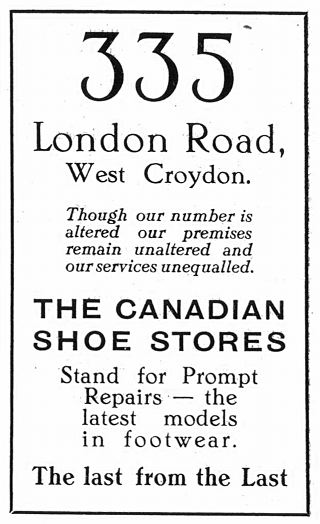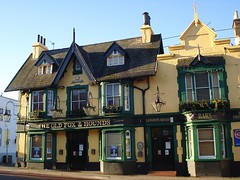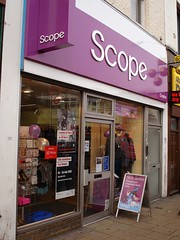Last week I wrote about 1 London Road, so given the rules of this series, today I should be writing about 2 London Road. But I can't — because like numbers 4, 6, and 8, it doesn't exist. Why not?
The brief (and even mostly accurate) answer is “because West Croydon station is there instead”. However, this isn't the full story. The addresses from 2-8 London Road have existed in the past, but not in just one location; indeed, some of the buildings that used to bear these numbers are still standing, though their addresses are different now.[1] So today's article is not an investigation of a specific address, but rather a discussion of street numbering on London Road.
The issue of street numbers is a major source of headache when trying to look into the past; over the years, streets have been renamed, renumbered, and often re-renamed and re-renumbered. London Road is no exception, having undergone two major renumberings in 1890 and 1927.[2]
Prior to 1890, London Road was only numbered on the west side (the left-hand side looking up towards Thornton Heath). Hence, the west side of the road began at number 1 and then proceeded to numbers 2, 3, 4, 5, and so on.[3] While buildings and businesses existed on the east side at the time, most of them had no number — although a few were numbered as Oakfield Terrace and Kidderminster Terrace.[4] The 1890 renumbering was basically a switch to the more modern alternating system, with odd numbers on the west side and even numbers on the east.
So from 1890, on the west side, number 1 (the Fox and Hounds) remained the same, number 2 (Rabbits & Son, Boot and Shoe Makers) became number 3, numbers 3-4 (F A Egleton, Oil and Colourman and Furnishing Ironmonger) became numbers 5-7, and so on. On the east side, the even numbers were allocated to the previously un-numbered addresses: number 2 to William Henry Morgan (Fruiterer), number 4 to Mrs Kingsland's Registry Office for Servants, number 6 to Samuel Piggott (Ironmonger and Oilman), number 8 to Henry G Dean (Greengrocer and Fishmonger), and so on.
While there are at least two obvious good reasons for the 1890 renumbering — ensuring that every address had a number, and switching to the more modern odd/even split system — I must confess that I don't know all the motivations behind the next renumbering of London Road, which took place in 1927. While some of it makes sense to me, most notably the incorporation of Station Parade into London Road (described below), other changes introduced confusing gaps which remain to the present day.
In the 1927 renumbering, the west side of the road retained the same numbers from 1-37. However, 39 was renumbered as 51, 39a as 53, 41 as 55, 43 as 57, and so on. Why were 39-49 left out? I have no idea. The modern-day numbers 37 (Kerr Optometrists) and 51 (MBM Halal Meat) are directly next to each other, with only a side-road intervening.
The east side also saw some changes. In the time since the 1890 renumbering, numbers 1-5 Station Parade, along with Station House, had appeared between West Croydon station and 2 London Road.[5] So here, London Road was renumbered to incorporate Station Parade. 1-5 Station Parade became 2-10 London Road, and Station House became 12-14 London Road. This meant that the previous 2 London Road was now 16, the previous 4 London Road was now 18, and so on. So far so sensible — but further up another lacuna appeared, as 22-24 were renumbered 40-42 but 26-28 jumped straight to 60-62. Again, I have no idea why 44-58 were omitted in the 1927 renumbering.
I should note that even after all this research, I'm still not entirely sure why numbers 2, 4, 6, and 8 London Road don't exist. I think the buildings that were renumbered to 2, 4, 6, 8, and 10 in 1927 were demolished around 1932-1933 as part of the redevelopment of West Croydon station. Then between 1932 and 1934, new buildings were constructed in the same block as the new station entrance — 10 London Road to the left of the entrance (now occupied by Greggs) and 166-174 North End to the right (now occupied by Maplin through to Road Runners).[6] Why were the latter given North End addresses rather than London Road ones?
One reason may have been that six addresses were needed for the six premises, and numbers 12 and up already existed in 1932. However, I still think it would have been neater to have them as, for example, 2, 2a, 4, 6, 8, and 10 London Road, since they're all in the same physical block and they're north of Station Road, which feels to me like a more natural division between North End and London Road. (Indeed, many people are still surprised to learn that North End doesn't end at Marks & Spencer, which is even further down!) Perhaps the actual reason was in order to reserve numbers 2-8 in case they were needed to give the new station entrance a proper address — though as far as I know, this hasn't happened.
Thanks to: all at the Croydon Local Studies Library; Effie Fotaki; and my beta-readers Helen and Kerry.
Footnotes and references
- Before 1890, numbers 2, 4, 6, and 8 were on the west side of the road, assigned to the buildings currently occupied by numbers 3, 7, 11, and 15, respectively. Between 1890 and 1927, numbers 2, 4, 6, and 8 moved to the east side of the road, assigned to the buildings now occupied by numbers 16-22. And from 1927, numbers 2, 4, 6, 8, and 8a were assigned to different buildings on the east side of the road; these were probably demolished around 1932-1933.
- London Road has also borne different names in the past, as well as different numbers. According to Gray's 1851 Directory of Kent, Surrey & Sussex, the southern part of London Road was formerly (i.e. some time before 1851) known as Parson's Mead, while the modern-day Parson's Mead was known as New Road. The 1840 deed I linked to last week shows this "New Road lately made", and suggests that it included the eastern part of modern-day Derby Road. The 1851 directory also considers London Road to end at Sumner Road, with the road north of this listed as Broad Green. Gray's Directory can be viewed online for free at the University of Leicester Special Collections Online (previously known as Historical Directories); the references to the information in this paragraph are on pages 42 and 43.
- According to Wikipedia, this was a fairly common form of numbering until the early to mid-1800s; streets tended to be numbered consecutively running up one side and then down the other, rather than the alternating method used today. Indeed, Croydon Council's street numbering guidelines state that consecutive numbering is still the preferred method for a cul-de-sac.
- As far as I can make out from cross-referencing old street directories, before 1886 the modern numbers 28-42 (First Choice Bakers through to Ideal Discounts) were numbered as 1-8 Oakfield Terrace, which became 1-8 The Parade between 1886 and 1890, then 10-24 London Road between 1890 and 1927, then 28-42 London Road to the present day. Kidderminster Terrace was further up, just past Kidderminster Road.
- I'm not entirely sure when Station Parade appeared, but I think it may be the row of buildings that are marked on the 1913 OS map but not the 1896 one. Historical street directories first list these in 1901, as 1-4 Station Buildings, though from 1902 they're 1–4 Station Parade (and 4 Station Parade becomes 4-5 Station Parade in 1925). Station House is a little more confusing, as I think it corresponds to the modern numbers 12-14, but if it is where I think it is, it was there on the 1880 OS map. However, it isn't listed in street directories until 1926.
- 10 London Road appears in Ward's street directories until 1930, is absent from the 1932 directory, and reappears in the 1934 one (I don't have access to directories from 1931 and 1933). 166–174 North End are shown on the 1934 OS map but not on the 1932 one, and they don't appear in street directories until 1934. Ward's 1934 has them as “shops unoccupied” followed by Zeeta caterers (not numbered) then Davies baby carriages (numbered as 152). By 1937, Zeeta has become 168, Davies has been renumbered to 174, and 166, 170, and 172 have all appeared, completing the modern numbering (which has a gap between numbers 142 and 166 similar to those introduced on London Road in 1927).



